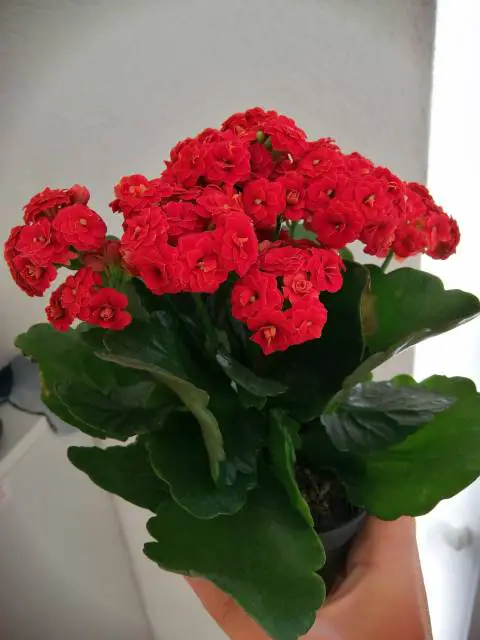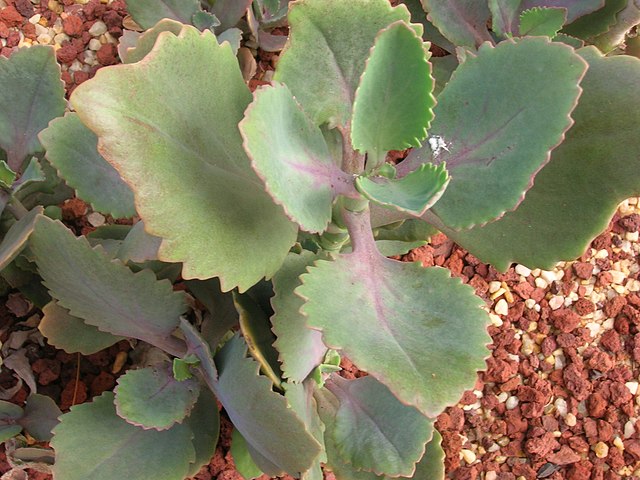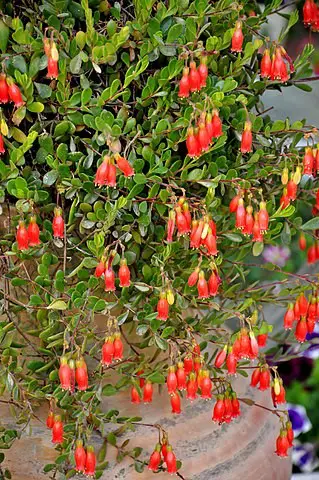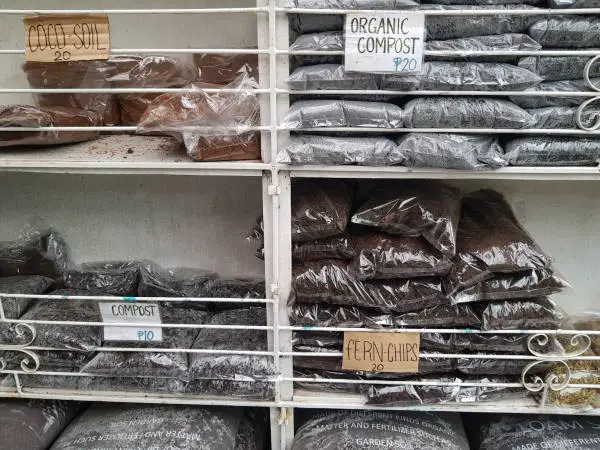You might have seen this beautiful ornamental flowering plant in a wide range of attractive bright red, pink, yellow, lilac or orange bouquets. The gorgeous clusters of tiny flowers grow all over the plant and make a beautiful floral display.
For people who love ornamental flowering plants, kalanchoes are probably one of the best gifts to give or receive.
These wonderful flowering ornamentals, also known as Florist kalanchoe, Christmas kalanchoe, Flaming Katy, or Madagascar Widow’s Thrill can bloom for two to six months of the year. They can be grown indoors and outdoors with very little care if they are kept under warm conditions with ample sunlight.
Caring for this sturdy indoor plant isn’t laborious, but it requires a bit of expertise to make a kalanchoe bloom again.
Care for Kalanchoes
The growth requirements of kalanchoes are pretty much like those of other succulents. So, people who have got some experience with growing succulents can easily add a few kalanchoes to their collection.
You can follow these necessary steps to care for your kalanchoes.
Light requirements
Kalanchoes need ample light to bloom. Move your plants outdoor under bright sunlight or place them close to a sunny window. If you can’t provide necessary sunlight artificial lighting such as LED lighting will also do well.
Temperature requirements
Adjusting the right temperature is pretty much important. Place the potted plants at a temperature between 55-80 °F (13-29 °C). Temperature below 40 °F is a “Big No” for kalanchoes as they can’t tolerate the cold temperature.
Room temperature works wonder for kalanchoes, just another reason why kalanchoes are preferable as indoor plants.
Water requirements
Just like other succulents, kalanchoe does not require a lot of watering. Proper watering to your succulents is a key to success. There is not a fixed watering schedule for kalanchoes, it depends on several factors such as soil type, pot size, temperature, light, etc.
Keep in mind that the soil should be allowed to dry before applying the next irrigation. Avoid overwatering as the roots can easily succumb to rot.
Soil and planting
Use a clay pot with a drainage hole so that the excess water may drain easily. Pot your plants in light, well-drained and aerated soil. The soil should be ideally a mix of 50% peat and 40% perlite.
Fertilization
Feed your kalanchoes once a month during the entire blooming period. Apply liquid fertilizers from early spring through the summer season to ensure the excellent blooming for years.
Propagation
The quickest way to propagate the kalanchoes is to use a stem cutting with a few leaves and placing it in well-drained soil. You can also propagate kalanchoes using a leaf cutting, but it is a relatively slow process. Once the roots start sprouting transfer the plants to the new clay pot.
Pruning/Deadheading
Deadheading means the removal of spent flowers from your plants. Pruning or deadheading will help to improve the growth and vigor of the plants. Keep removing wilted or spent flowers regularly (deadheading). It will keep your plants look neat and tidy.
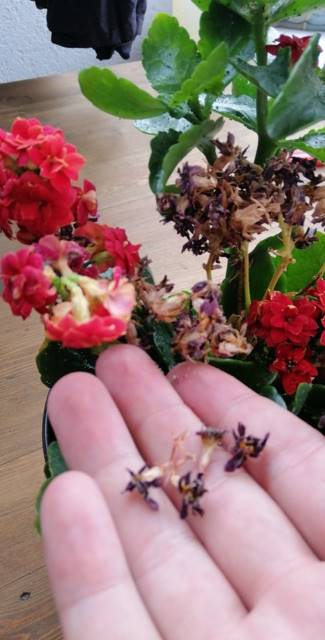
You can also cut back each stem to improve plant growth and produce more than one new head. Give a little break to the plants after pruning or deadheading and minimize watering. Although this practice isn’t necessary, it helps to initiate new growth and flowering.
How to get your Kalanchoes bloom again and again?
Making a kalanchoe bloom again after the first bloom dries out can be a challenge however, it is achievable under certain environmental conditions. Most of the people discard their kalanchoes after the plants are done with blooming. Please don’t throw away your plants once they finish flowering, as you can make them bloom again and again.
To make your kalanchoes bloom again it is necessary to keep your plants dormant for a certain period. A dormancy or hibernation period is essential for the plants to gather enough energy for re-blooming and growth under favorable conditions.
This period should start in November and last for about six to eight weeks. Then the plants will ultimately start to produce new buds in the following year.
“A period of dormancy is essential to make your kalanchoes rebloom”
Here are a few simple guidelines you should observe to make your kalanchoes blooming for years.
Adjusting the light requirements
Day length plays a key role in blooming. Once the days are short and nights are long, your kalanchoes will be pushed to send out its beautiful inflorescence. Most of the kalanchoes varieties will start flowering naturally as the days become shorter in the autumn, and they don’t receive any light at all.
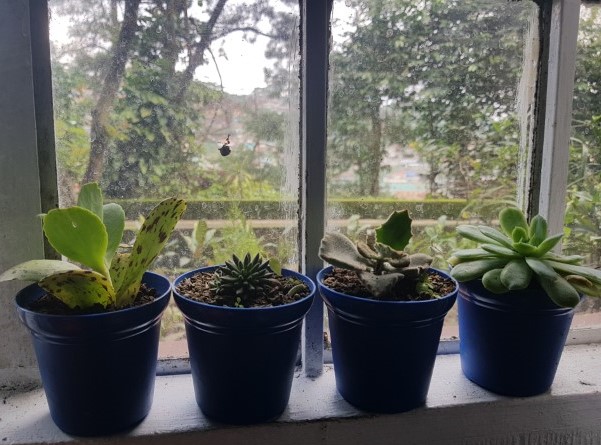
Still, if you are having a problem in reblooming your kalanchoes, you can easily help it along by providing a few weeks of dormancy.
Exposure of plants to low light levels from fall to late winter normally induces flower formation. Provide 9-10 hours of bright sunny daylight and then complete darkness for a period of 14-15 hours, usually from 6 p.m. to 9 a.m. during the dormancy period.
To ensure complete darkness don’t even place your plants under artificial lighting. You can’t even turn a lamp or an incandescent light bulb on in the room at night.
Keeping your plants in a closed cabinet during nighttime or a windowless dark storage room can also help you to get the best results. Besides you can keep your plants covered by placing a bucket or box over it or you can use a dark cloth to cover your plants to provide a long dark period. In this way, you will stimulate the natural dormancy period of kalanchoes.
If the plants miss even a single day of darkness it might be enough to keep the plant from producing flowers.
Keep your plants at low temperature
Keep the plants as cool as possible. The temperatures should not go beyond 59°F (15°C) during the dormancy period. Avoid exposure to high temperatures.
Cut short water supply
If you want to see your kalanchoes blooming again cut short the water supply. Follow the lighting requirements and minimize the water supply to absolutely nothing during the entire period of dormancy. Water your plants lightly just once after 3 weeks and keep the soil well-drained.
Do not apply fertilizers
Do not provide any fertilizers or nutrients during the rest period, as your plant is in the dormant stage. Once the buds start to appear fertilize the plants with a 0:10:10 water-soluble fertilizer in late winter. The application of fertilizers at the bud initiation stage will promote better flowering, plant health, and vigor.
At the end of the dormancy period, you will be delighted to see new developing buds about 6-8 weeks later. The switch from dormancy period to exposure with increased light and water will tell the plants “Yayy! it’s spring season and the right time to bloom”. The success of this effort will make you realize that it was worth it
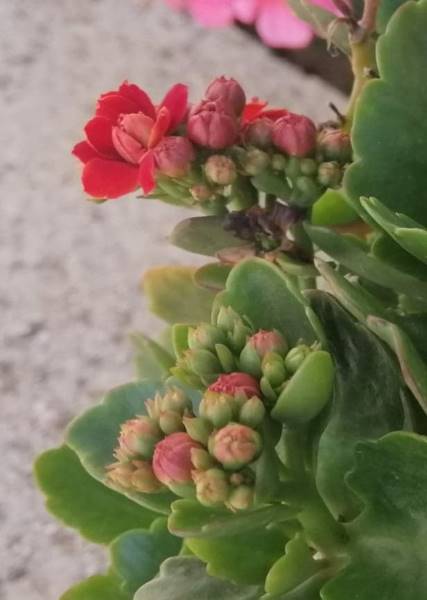
As soon as your plants start to produce buds, return them to their usual light requirements, and provide regular watering. Feed your plants and keep removing the spent flowers to encourage the development of new buds.
If you want your kalanchoes to bloom for a special occasion or a festival, like Christmas, Thanksgiving just put your plants to dormancy for six to eight weeks before the event. The colorful blooming kalanchoes will bring ultimate joy to your festival.

